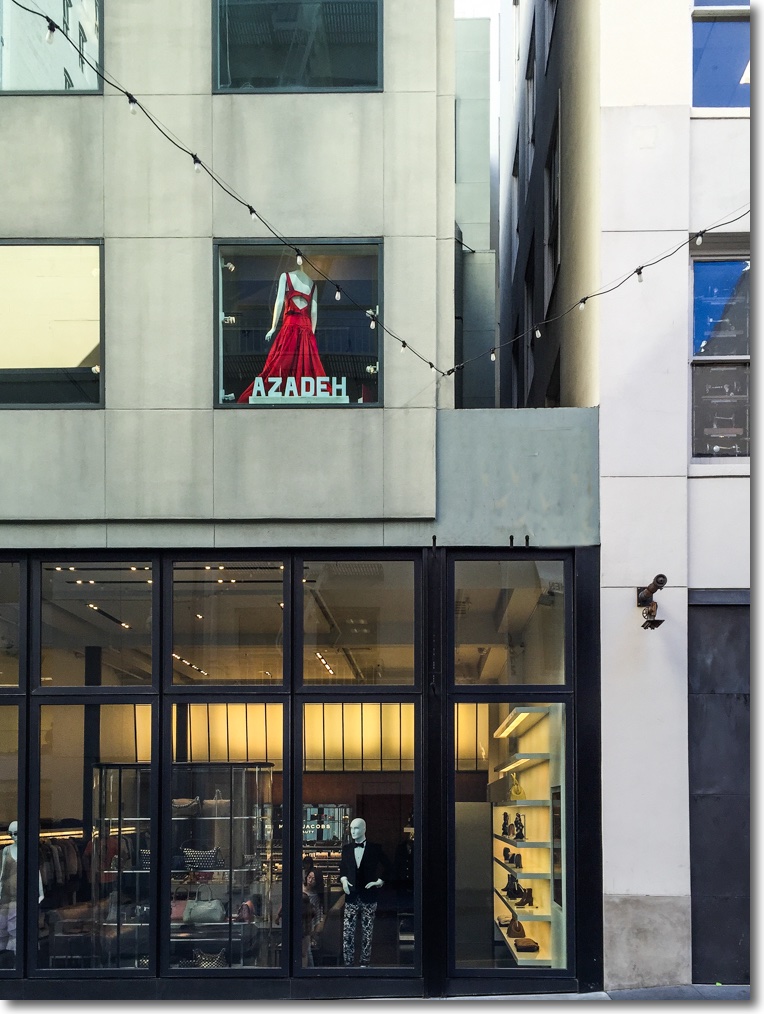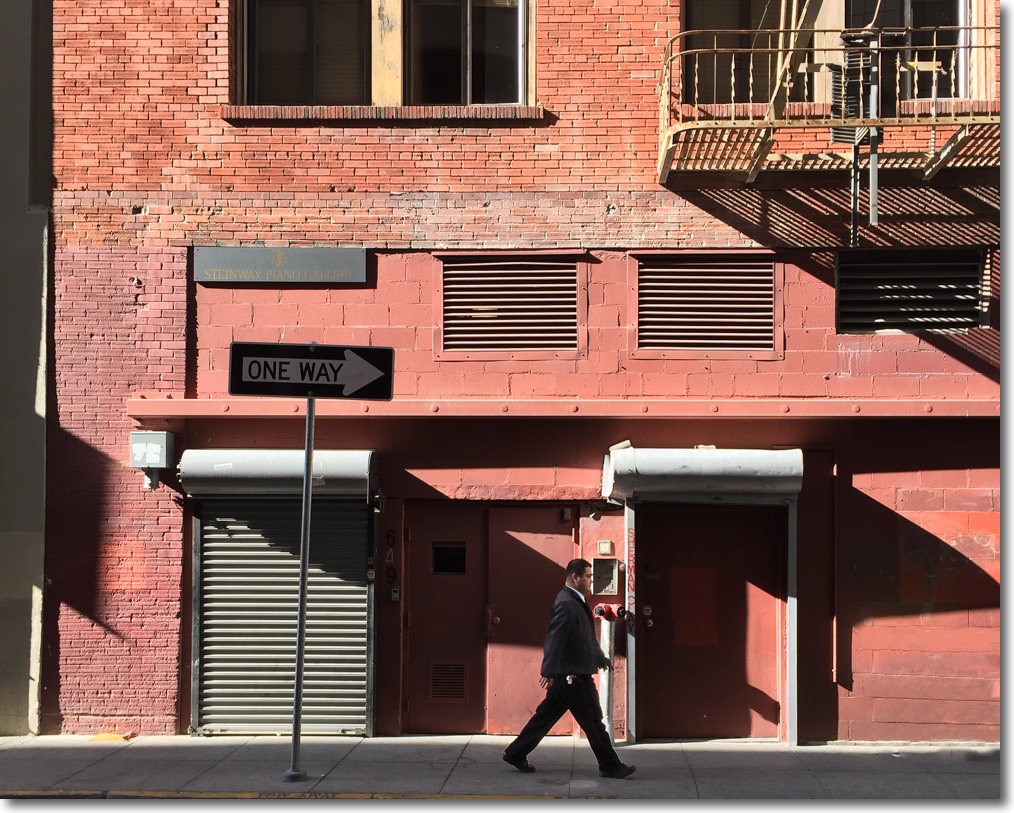On Maiden Lane, SF.

iPhone 6 snap.
On Maiden Lane, SF.

iPhone 6 snap.
Broadband speed at last.
Many computer users think nothing of spending on the latest hardware yet fail to diagnose where their speed bottlenecks lie. For most who use the internet frequently the greatest bottleneck is broadband speed, or rather the lack of it.
I have been plagued with mediocre broadband as long as I can remember, with AT&T’s Uverse service here peaking at 22mbs and averaging more like 15mbs. It has at least been very reliable, here in the Bay Area.
When my son Winston was buying his iPhone 6 at the local Apple Store the other day (I manage his money so he can afford it!) I got chatting with the Apple sales person and he told me that a local broadband vendor named Astound services his (old – no optical fibre) building and that he was getting 100mbs. Well, I immediately discounted the possibility of such insane speed but followed his advice and checked for service in my area. Sure enough, they cover it so I had them install their hardware on the understanding that if they did not at least double my AT&T speed that they would have to refund me anything I paid. Done deal.
Here is the result of this happy experience:

On the iPhone 6.
Wow! The Mac Pros in the home all report similar results, as do the many iPads.
I’ll parallel run with AT&T for a month and, if Astound is reliable, will have the unalloyed joy of firing one of America’s least ethical big businesses, one which treats its customers like crooks. The only crook in this relationship is the vendor.
Installation issues? The Astound service runs over cable, not over the dated copper wires used by AT&T, and comes with a small cable modem. My building was already wired for cable so installation was a breeze, no cables to run or walls to drill. I connected the router to my Apple Airport Extreme (AEX) dual band 802-11ac wireless router (the tower version) using an RJ45 Ethernet cable (the Astound technician’s was too short, so off it was to the cardboard box under the stairs) and one of the MacBook Airs immediately saw the connection amd recorded 99mbs download speed, accompanied by much whooping and hollering from this user. However, none of the other machines in the home wanted to ‘see’ the AEX. I let the man go with the assurance I could figure it out, and after the usual poncing about (with respect to Mr. Cook) determined a hard reset of the AEX was called for whereupon everything was sweetness and light and, before you could say sodomite, I had some dozen machines running well in the old manse.
If at all possible, look at cable broadband providers in your area before splashing out on yet newer computer hardware. A fast connection really is night and day, and the usefulness of my remaining ‘clock cycles’ has been vastly increased. Cost? No different from the soon-to-be-fired AT&T. Plus Astound told me they are working on a 250mbs version. Sign me up.
Among the shadows.

iPhone 6 snap.
How did that happen?

iPhone 6 snap.
How about a ride?

iPhone 6 snap.